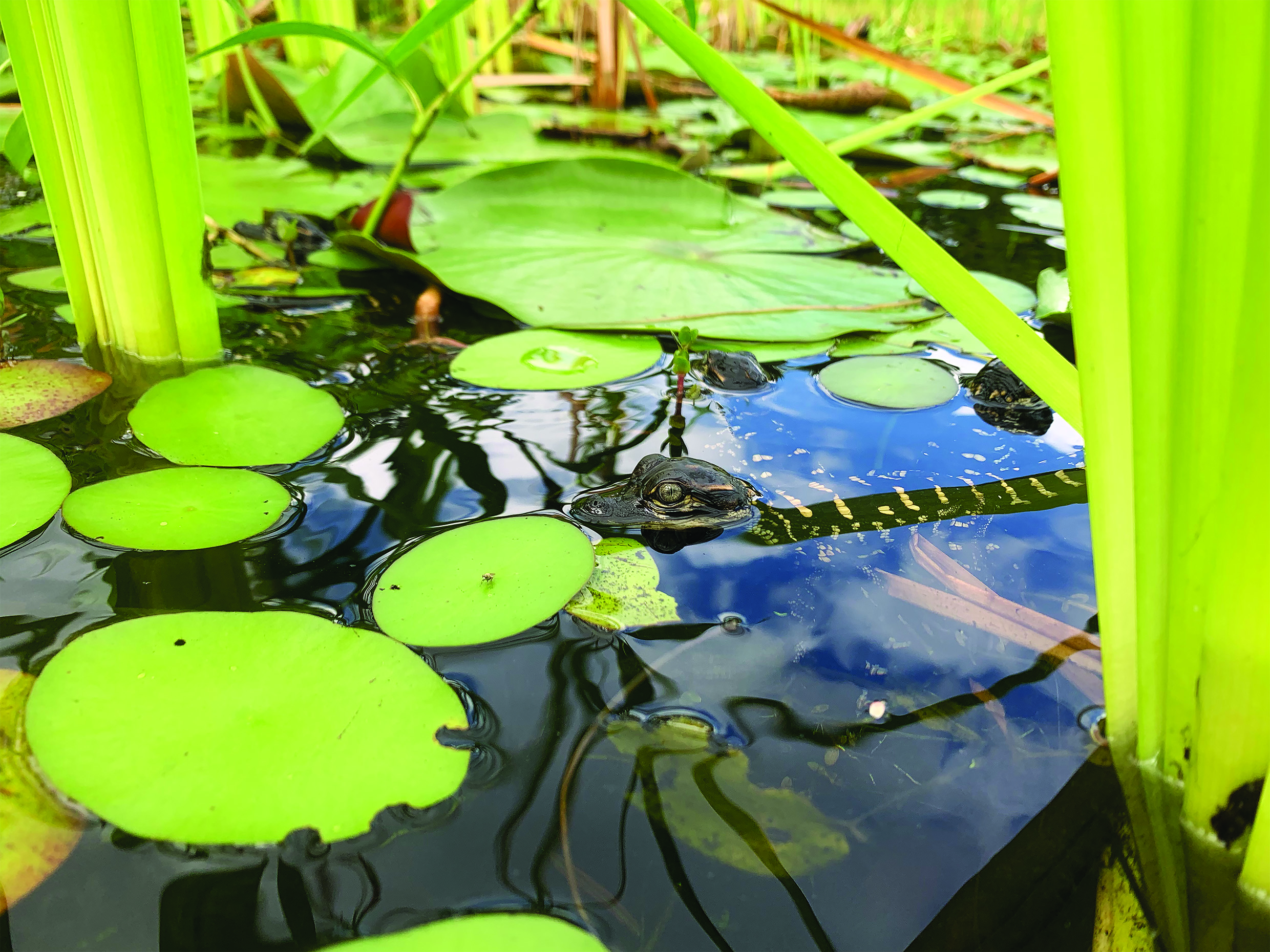A study by University of Georgia researchers indicates that warming temperatures could impact the future of the American alligator and potentially result in its demise.
Like all crocodilians, the sex of an alligator’s offspring is determined by the temperature the embryos experience during a critical two-week window of their incubation known as the temperature-sensitive period.
Samantha Bock, lead author of the study, analyzed the temperatures of 86 alligator nests located at the John F. Kennedy Space Center in Florida and the Tom Yawkey Wildlife Center in South Carolina. She also examined weather station data from those locations, along with U.S. Geological Survey data, to predict sex-ratio outcomes to the year 2100.
Bock, a doctoral student at the Savannah River Ecology Laboratory and the Odum School of Ecology, found that nest temperatures showed a consistent trend, correlating with the average daily high temperature over the course of the eight-year monitoring period.
When Bock modeled the team’s finding with the temperatures forecasted by the federal government for future years at those sites, the findings showed nest temperatures would increase by 2.9 to 6.7 F. Although that increase is slight, it can make a huge difference in outcomes, according to Bock.
“All crocodilians have the same pattern of producing females at extreme temperatures and males at intermediate temperatures,” she said. “Since climate change has the ability to alter sex ratios, we could see either a dominant female or male population in the future that lacks the ability to reproduce.”
The study reports female alligators are produced when temperatures are below 88.7 F or above 94.1 F, while temperatures from 90.5 F to 92.3 F produce male offspring.
Adult female alligators are known for maternal care of their offspring, and they have the potential to make needed adjustments, according to Benjamin B. Parrott, associate professor at SREL and Odum.
One such adjustment is choosing where they build a nest, so the research team evaluated whether a mother’s site choice made a difference in modifying nest temperatures. They measured elevation, the amount of shade based on a scale and the air temperature around the nests.
“We saw slight variations in nest temperatures within a year, but this didn’t modify or compensate for the impact the average daily high temperature had on nest temperatures that we consistently observed from year to year,” Parrott said.
Bock noted that 11 of 24 crocodilians, including crocodiles, caimans and gharials, are currently listed as threatened.
“The American alligator is a conservation success story, but it has the potential to become threatened if we don’t monitor for these changes,” she said. “We need to monitor crocodilian species worldwide before the situation becomes too dire.”
Bock and Parrot said their future research will investigate the impact of extreme fluctuations in temperature on sex-ratio outcomes, as this effect is unknown.
The study was published in the journal of The Royal Society. Co-authors include John Drake, Odum School and the Center for Ecology of Infectious Diseases; Russell H. Lowers, Eric Stolen, Stephanie Weiss and Brenton Back, Integrated Mission Support Services, John F. Kennedy Space Center; Thomas Rainwater, Tom Yawkey Wildlife Center, and Belle W. Baruch Institute of Coastal Ecology and Forest Science, Clemson University; Phillip Wilkinson, Tom Yawkey Wildlife Center; and Louis Guillette Jr., Medical University of South Carolina, Hollings Marine Laboratory.


